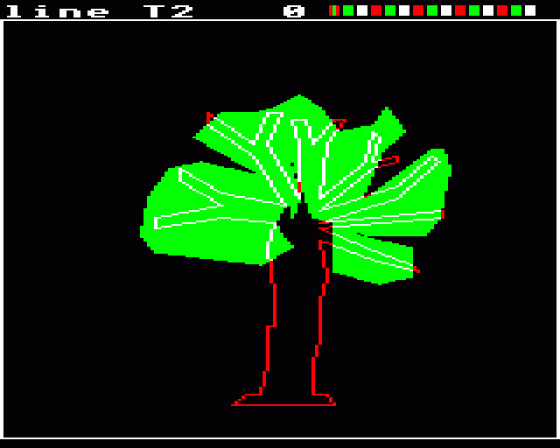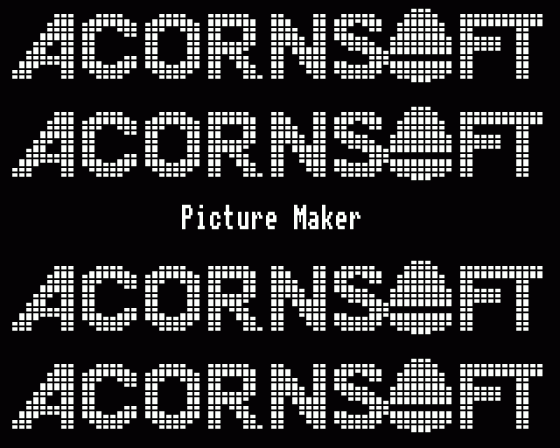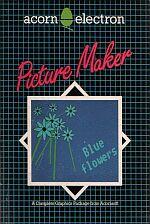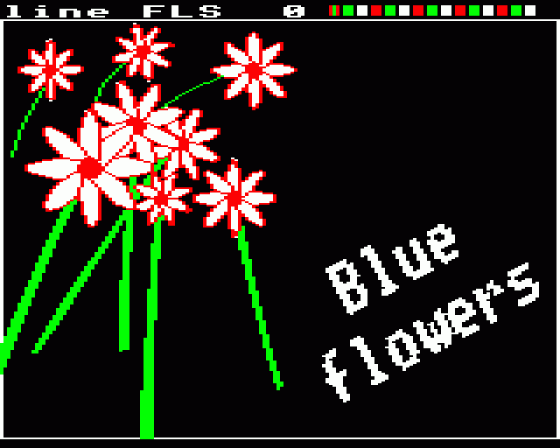
Acorn User
 1st August 1984
1st August 1984
Categories: Review: Software
Author: Simon Williams
Publisher: Acornsoft
Machine: Acorn Electron
Published in Acorn User #025
Dee Vince reviews three packages claiming to turn micros into electronic canvas and digital oils
It is especially interesting to carry out a comparative review when the packages concerned all claim to do exactly the same job, in this case drawing pictures. Judging such software is difficult as there are many different criteria, so I shall try to cover all the various aspects of these programs. Let's start with the loading procedures. Sketch Pad has to win here for its novel title page. Part of the screen is drawn with a 'laser' light similar to the opening titles of ITV's World Of Sport. It's a simple idea, but effective. Now, onto the programs.
All these packages present a blank drawing screen with a horizontal option menu. In the case of Paintbox and Picture Maker this is at the top, with Sketch Pad at the bottom. Sketch Pad's menu displays eight colours and an assortment of drawing options, all on the one menu. Paintbox also has a palette of eight colours, but with a secondary menu to cover its range of drawing options. Picture Maker gives the ability of using fifteen colours, though when drawing only the colours of Modes 4 and 5 are available. That might sound contradictory, but I'll explain it later. Let's look at Picture Maker first as it is the most difficult of the packages, though the most comprehensive.

Picture Maker works on two levels; a 'catalogue level' and 'picture level'. When first entering the drawing program the user is taken into catalogue level. This is a blank screen showing the number of bytes left in memory and the names of any units (picture files) which are currently in memory. From this level, Operating System commands can be used (as well as all disc system commands), and the commands which manage the program's saving and loading, changing screen modes and displaying the current picture.
The picture level is where the drawing takes place, starting off with a blank screen and a menu at the top which says which drawing option is being used: line, text, triangle, etc. In common with the other packages the colours are displayed in a strip, but here Picture Maker does differ. As mentioned earlier, fifteen colours are available, but not when drawing. What happens is that the extra seven are repeated in the colours of the the present screen mode along the strip of palette colours. Confusing? Well, it is! However, it does actually work as the drawing recorded on file contains the colours the user specifies, not those available when drawing; so when the picture is redrawn the full range of colours is shown.
This is somewhat unfriendly and perhaps another method, such as naming or specifying the number of a colour, would have led to less confusion. But to be fair, Picture Maker is a superb package and is easily the best of the three reviewed. It is also the most difficult, but worth the extra effort. Picture Maker allows the user to merge different pictures together, each picture being a unit, thus the reason for the catalogue level displaying the different units in memory. Another extensive feature is the text mode. Besides normal size text, a number of special effects are possible. The text size can be changed by a 'transform' option that allows the text to be expanded and rotated. The shape of the text can be changed by altering the scale of the letters in two directions and text can be spaced in any direction. All these transformations allow a variety of effects to be created including special effects such as mirror images and italic typefaces.

The transformations mentioned can also be used while drawing and allow powerful manipulation of a picture unit. Another feature allows a shape from a previously drawn unit to be taken out and merged into the current picture.
Producing standard shapes is straightforward and requires only choosing the appropriate drawing mode. All three packages have circles, triangles and lines and involve a few easy steps. There is much to cover in Picture Maker and I have only pointed out a few of its features. The normal drawing commands are all present and I'll return to the rest of the package shortly. But now to Paintbox.
Paintbox can only be used with joysticks on the BBC, unlike the other two packages. Options are chosen from one of two menus by just touching the appropriate menu option with a cursor and pressing the fire button. It is certainly easy and fixing standard shapes is no problem. Eight colours are used, though by using the 'in-fill' option a ninth colour, which is a mixture of two others in a striped effect, can be created. Paintbox also has a feature I like that is lacking from the other packages, namely co-ordinates of the cursor on the screen. It does, however, only work in one of the 'brush' sizes. That point neatly raises the use of different brush sizes, eight in total, with the option of a ninth variable size chosen by the user. This is done by setting the brush size equal to the length of a drawn line.
The erase option is merely a clear screen facility and changes the background screen to the currently-defined brush colour. This makes erasing part of the picture difficult and means trying to erase your mistake by redrawing in the background colour (though this is not covered in the manual). Paintbox, in common with Picture Maker, makes use of the GCOL command. This gives a number of effects to choose from and controls the way in which a colour is placed on the screen. This means the plotting of colours can be as specified, OR-ed, AND-ed, EOR-ed or have the colour already there inverted.
The secondary menu allows the choosing of the eight brush sizes and the size of text relates directly to the size of the brush. Paintbox doesn't have the range of commands of Picture Maker but is easier than the other packages initially, although it does require a joystck.
Finally, Sketch Pad from Goldstar. It was the cheapest of the packages - and the most attractive on first sight. Boxed in a video case, it is well-presented and is provided with a separate list of commands card and a colourful 21 page manual. Options are chosen by pressing the keys usually in conjunction with the CTRL button. Out of the three menus I liked this one the most. The pen up/down indicator, for instance, is a picture of a pen nib either in the air or on the paper. The range of commands is limited to the standard commands (line, triangle, circle, etc) with little scope for the added effects of the other two packages. Text can only be entered in one size and as with Paintbox there are eight colours with an extra colour available, which is a mix of two colours in one of three effects - chequerboard, striped, or horizontal stripes.

SKETCH PAD |

PICTURE MAKER |

PAINTBOX |
Sketch Pad provides a potentially good command not implemented in either of the other two packages, a magnification function. This allows the user to enlarge an area four times its normal size for easier correction. Although the area is limited, this is a worthwhile addition.
Having briefly covered the main aspects I'm now going to turn to the remaining parts of the packages. Redrawing a picture is often given less consideration that it should but not in the case of Picture Maker. Unlike the other two packages which allow the saved picture to be redrawn (Paintbox also giving details of the *LOAD address), Picture Maker includes a variety of ways to reshow a picture and provides much needed information to the more experienced computer user.
Picture Maker does not come with one program but five. There is the main drawing program Drawpic, and Showpic for displaying the pictures in any of five screen Modes. Picdata converts pictures into BASIC data statements for inclusion in a user's own program in a *EXEC file format, and Datapic converts this data back into a picture. There is a section on the picture memory data structure in the manual though this is not recommended for beginners! Finally, there is a screen dump facility. This, as it is covered only by an insert in the package, appears to have been an afterthough, but an excellent one it is. From either Drawpic or Showpic a picture can be dumped to disc or tape and then recreated on screen immediately. Reloading a screen dump can either be implemented by the *LOAD command or by using the Restpic program provided.
The manuals with the packages are good overall. The Paintbox manual covers everything, while the Sketch Pad version is bright, colourful and extremely friendly. Contrasting with this is the Picture Maker manual which runs to 43 pages and is very comprehensive. The overall impression I gained from these packages was that the quality was of a high standard.
However, Picture Maker is without a doubt the most advanced out of the three. Its capabilities far outstretch the others, but it also the most complicated and this must be taken into consideration. For completeness, though, my vote goes to Picture Maker.













